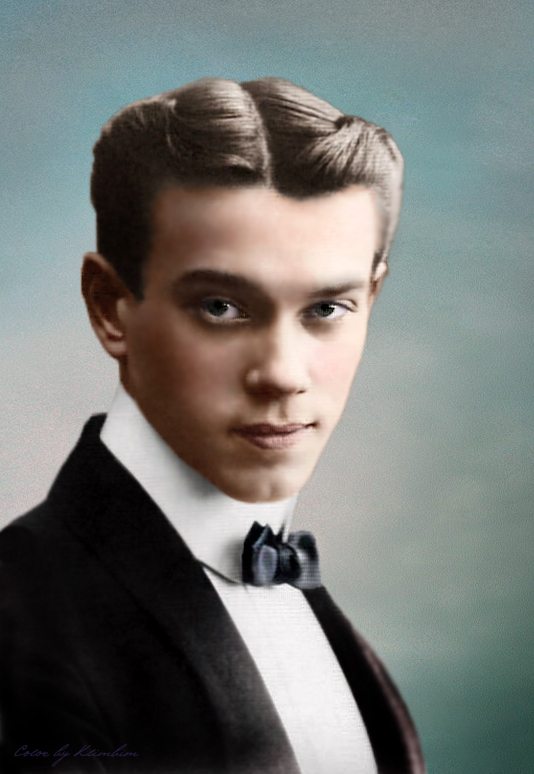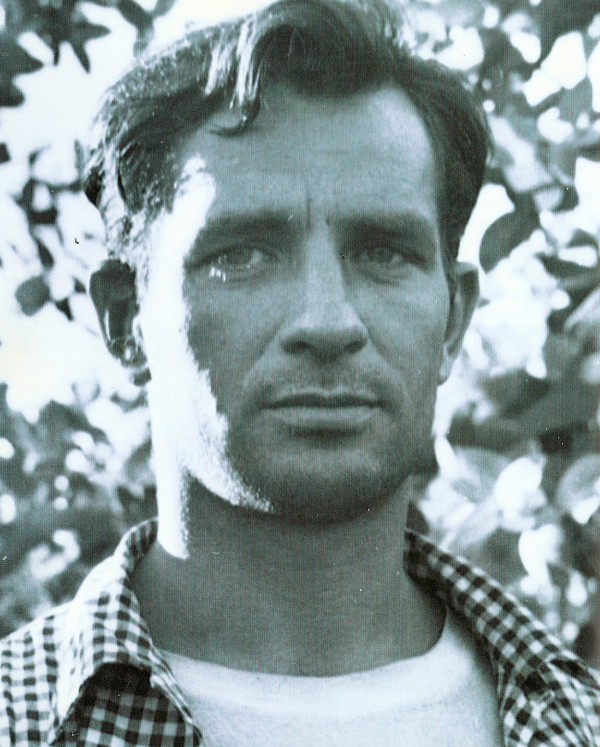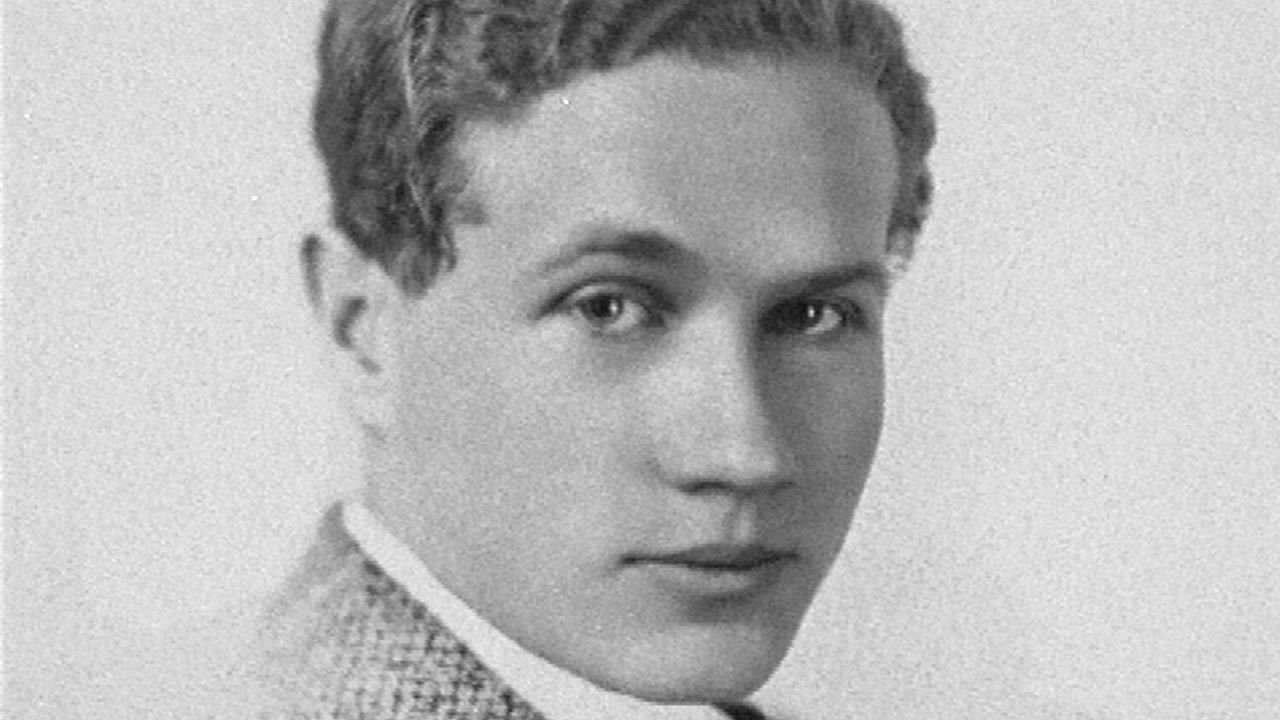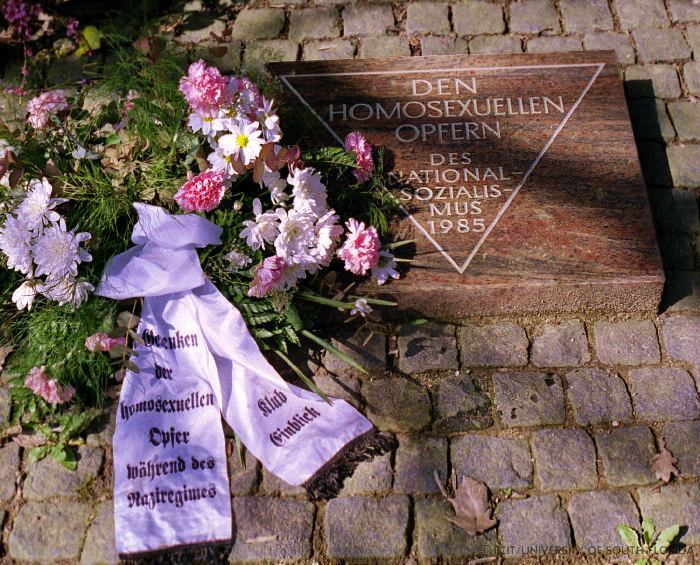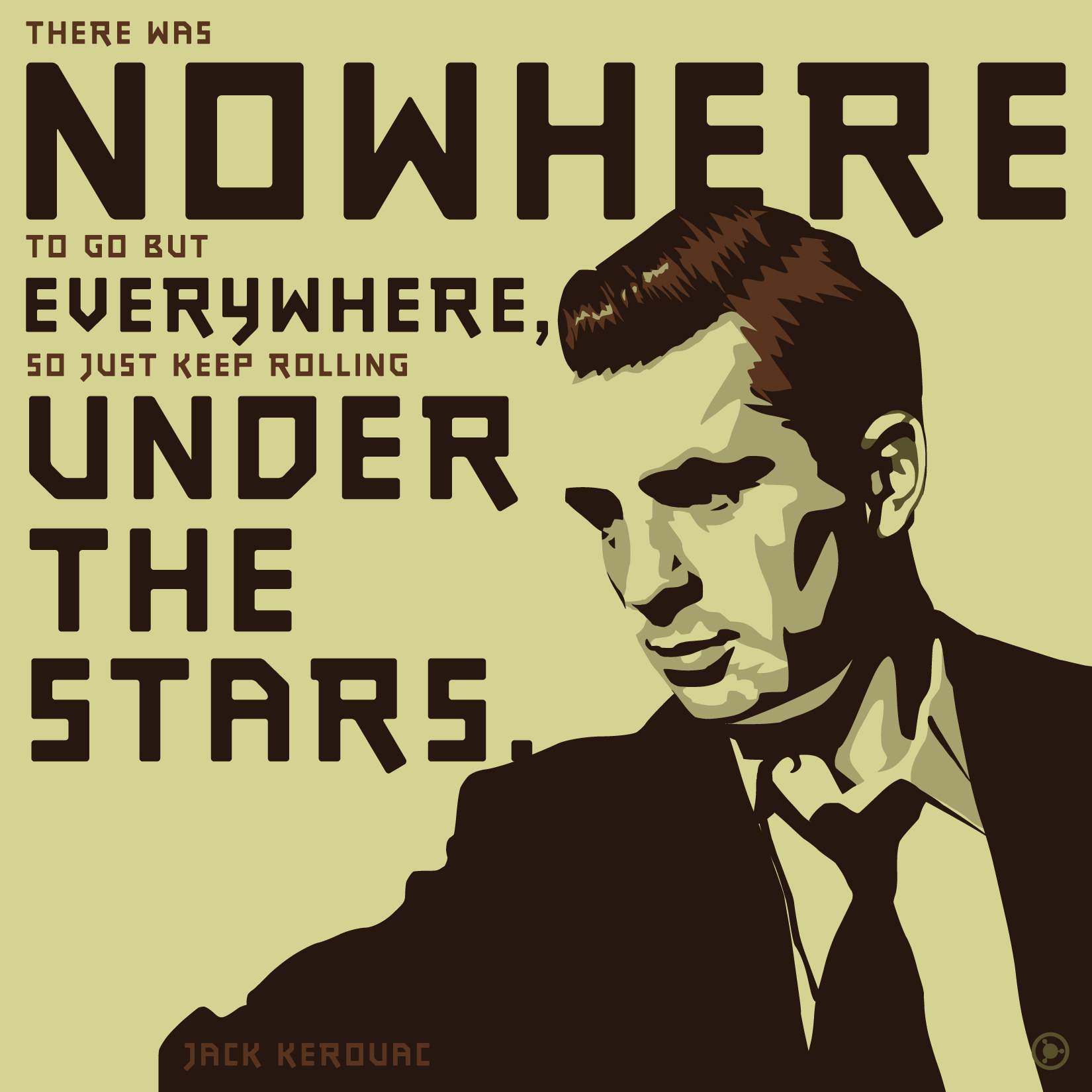|
Gay Wisdom for Daily Living brought to you by White Crane Institute ͏ ͏ ͏ ͏ ͏ ͏ ͏ ͏ ͏ ͏ ͏ ͏ ͏ ͏ ͏ ͏ ͏ ͏ ͏ ͏ ͏ ͏ ͏ ͏ ͏ ͏ ͏ ͏ ͏ ͏ ͏ ͏ ͏ ͏ ͏ ͏ ͏ ͏ ͏ ͏ ͏ ͏ ͏ ͏ ͏ ͏ ͏ ͏ ͏ ͏ ͏ ͏ ͏ ͏ ͏ ͏ ͏ ͏ ͏ ͏ ͏ ͏ ͏ ͏ ͏ ͏ ͏ ͏ ͏ ͏ ͏ ͏ ͏ ͏ ͏ ͏ ͏ ͏ ͏ ͏ ͏ ͏ ͏ ͏ ͏ ͏ ͏ ͏ ͏ ͏ ͏ ͏ ͏ ͏ ͏ ͏ ͏ ͏ ͏ ͏ ͏ ͏ ͏ ͏ ͏ ͏ ͏ ͏ ͏ ͏ ͏ ͏ ͏ ͏ ͏ ͏ ͏ ͏ ͏ ͏ ͏ ͏ ͏ ͏ ͏ ͏ ͏ ͏ ͏ ͏ ͏ ͏ ͏
|
|
||||
| This Day in Gay History | ||||
March 12Born 1890 - VASLAV NIJINSKY, Polish ballet dancer (d. 1950); A Russian ballet dancer and choreographer of Polish origin. Nijinsky was one of the most gifted male dancers in history, and he became celebrated for his virtuosity and for the depth and intensity of his characterizations. He could perform en pointe, a rare skill among male dancers at the time and his ability to perform seemingly gravity-defying leaps was legendary. A turning point for Nijinsky was his meeting with Sergei Diaghilev, a member of the St Petersburg elite and wealthy patron of the arts, promoting Russian visual and musical art abroad, particularly in Paris. Nijinsky and Diaghilev became lovers, and Diaghilev became heavily involved in directing Nijinsky's career. In 1909 Diaghilev took a company to Paris, with Nijinsky and Anna Pavlova as the leads. The show was a great success and increased the reputation of both the leads and Diaghilev throughout the artistic circles of Europe. Diaghilev created Les Ballets Russe in its wake, and with choreographer Michel Fokine, made it one of the most well-known companies of the time. His partnership with Tamara Karsavina, also of the Mariinsky Theatre, was legendary. Nijinsky went back to the Mariinsky Theatre, but was dismissed for appearing on-stage wearing tights without the trunks obligatory for male dancers in the company. The Dowager Empress Marie Feodorovna complained that his appearance was obscene, and he was dismissed. It is probable that the scandal was arranged by Diaghilev so Nijinsky could be free to appear with his company, in the west, where many of his projects now centered around him. He danced leading roles in Fokine's new productions Le Spectre de la Rose, a role never satisfactorily danced since his retirement, and Igor Stravinsky's Petrushka, in which his impersonation of a dancing but lifeless puppet was much admired. Of the thousands of descriptions of the famous dancer, only Cocteau’s suggests the “mortal god” that was Nijinsky. Cocteau alone observed “the contrast between the Nijinsky of Le Spectre de la Rose, bowing and smiling to thunderous cheers as he took his fifty curtain calls, and the poor athlete backstage between bows, gasping and leaning against any support he could find, half fainting, clutching his side, being given his shower and massage and rubdown by his attendance and the rest of us. On one side of the curtain he was a marvel of grace, on the other, an extraordinary example of strength and weakness…” 1922 - JACK KEROUAC, American writer (d. 1969); an American novelist, writer, poet and artist. Along with William S. Burroughs and Allen Ginsberg, he is among the best known of the writers (and friends) known as the Beat Generation. Kerouac's work was popular, but received little critical acclaim during his lifetime. Today, he is considered an important and influential writer who inspired others, including Tom Robbins, Lester Bangs, Richard Brautigan and Ken Kesey, and writers of the New Journalism. Kerouac also influenced musicians such as The Beatles, Bob Dylan, Morrissey, Tom Waits, Simon & Garfunkel, Lebris Ulf Lundell and Jim Morrison. Kerouac's best-known books are On The Road, The Dharma Bums, Big Sur and Visions of Cody. Kerouac spent many of the years between 1947 and 1951 on the road, although he often spent extended periods at his mother's home and in the Florida home he purchased for her. 1928 - American playwright EDWARD ALBEE was born in Washington, DC, as Edward Ranklin Albee III (d: 2016); Albee was best known for his plays Who's Afraid of Virginia Woolf?, The Zoo Story, A Delicate Balance and Three Tall Women. His works are considered well-crafted, often unsympathetic examinations of the modern condition. His early works reflect a mastery and Americanization of the Theatre of the Absurd that found its peak in works by European playwrights such as Jean Genet, Samuel Beckett, and Eugène Ionesco. Younger American playwrights, such as Pulitzer Prize-winner Paula Vogel, credit Albee's daring mix of theatricalism and biting dialogue with helping to reinvent the post-war American theater in the early 1960s. Albee continues to experiment in new works, such as The Goat: or, Who Is Sylvia? (2002). He won the Tony Award for Best Play in 1963 and 2002, and the Pulitzer Prize for Drama in 1967, 1975 and 1994. He was awarded the National Medal of Arts in 1996. In 2005 Albee received a Special Tony Award for Lifetime Achievement. Albee was openly gay and stated that he first knew he was gay at age 12 and a half. Albee was briefly engaged to Larchmont debutante Delphine Weissinger, and although their relationship ended when she moved to England, he remained a close friend of the Weissinger family. Growing up, he often spent more of his time in the Weissinger household than he did in his own, due to discord with his adoptive parents. Albee insisted that he did not want to be known as a "gay writer", stating in his acceptance speech for the 2011 Lambda Literary Foundation's Pioneer Award for Lifetime Achievement: "A writer who happens to be gay or lesbian must be able to transcend self. I am not a gay writer. I am a writer who happens to be gay.” His longtime partner, Jonathan Thomas, a sculptor, died on May 2, 2005, from bladder cancer. They had been partners from 1971 until Thomas's death. Albee also had a relationship of several years with playwright Terrence McNally during the 1950s. Albee died at his Montauk New York, home on September 16, 2016, aged 88 A little Albee: "What could be worse than getting to the end of your life and realizing you hadn't lived it? A usefully lived life is probably going to be, ultimately, more satisfying." "Writing should be useful. If it can't instruct people a little bit more about the responsibilities of consciousness there's no point in doing it." "Creativity is magic. Don't examine it too closely." "Sometimes it's necessary to go a long distance out of the way in order to come back a short distance correctly." Died 1996 - COUNT EIGIL KNUTH died on this date (b: 1903). Count Knuth was a Danish explorer, archaeologist, sculptor and writer. He is referred to as the “Nestor ("elder statesman") of Danish polar explorers.” His archaeological investigations were made in Peary Land and adjacent areas of High Arctic Greenland. Knuth was made a Knight of Dannebrog He was born in Klampenborg, Denmark (near Copenhagen). His parents were Count Eigil Knuth Sr, a captain, and Djimphna (née Gamel). His hero was the Norwegian explorer Fridtjof Nansen who, in 1888, was the first to cross the Greenland Icecap; the trip was financed by State Councillor Augustinus Gamel, a Danish businessman, and Knuth's maternal grandfather. Gamel's birth gift to his grandson was a present Gamel had received from Nansen: the compass Nansen carried on his Greenland icecap expedition. Knuth studied building technology at the Royal Danish Academy of Fine Arts and then woodcarving at Val Gardena in Italy between 1926 and 1928. He published his first book, on the subject of philosophy, in 1927, revealing an affinity with the Danish philosopher Soren Kierkegaard. In 1932, Knuth graduated as a gymnastics teacher from Ollerup Physical Training College in Denmark. Knuth’s first trip to Greenland occurred in 1932 on an archaeological dig to excavate old Norse sites on West Greenland's coast. Knuth spent the next two years as an art critic for the Copenhagen newspaper Dagens Nyheder. Assisting Dr. Roussell and Dr. Poul Nørlund during the summer of 1934, Knuth excavated old Norse ruins at Igaliko. In 1935, Dr. Helge Larsen, Ebbe Munck, and Knuth, as archaeologist, assisted on the Augustine Courtald Expedition to East Greenland, during which Gunbjrns Fjeld, Greenland's highest mountain, was climbed. The following summer, in 1936, Knuth, Robert Gessain, and Michel Perez participated in the French Trans-Greenland Expedition under Paul-Emile Victor, crossing the Greenland ice cap, starting at Christianshab in the west, and ending at, an Inuit settlement in the east. It was here that Knuth worked as a sculptor, producing a notable series of busts of the local Inuit. Knuth financed the bulk of his next expedition, known as Dansk Nordgrønlandsekspedition 1938—39, udsendt af Alf Trolle, Ebbe Munck og Eigil Knuth til Minde on Danmark-Ekspeditionen ("Danish Northeast Greenland Expedition 1938—39, sent out by Alf Trolle, Ebbe Munck, and Eigil Knuth in memory of the Denmark Expedition"), arriving in Greenland with his co-leader and friend, Ebbe Munck, on June 19, 1938. The crew consisted of six more men. It was the first Danish Greenland expedition to make use of an airplane, a de Havilland Tiger Moth. With the start of war, Knuth could not return to Greenland as planned, instead, becoming an announcer for Denmark Radio in the Danish resistance movement. During the period of 1948 — 50, Knuth was back in Greenland and made several discoveries, including a large tool collection of the Thule culture and tool fragments of the Dorset culture. His most important contribution, however, was the first identification and demonstration of Independence culture and Independence II culture immigration waves of Paleo-Eskimo, spread apart by almost 3000 years. He named the cultures "Independence" after the Independence Fjiord located in Peary Land. In addition to sculpting, he produced paintings and watercolors. Some of his works were on display at the 1939 New York World’s Fair. Noteworthy Today's Gay Wisdom 2018 - The Wit of Jack Kerouac “Be in love with yr life.”— Belief and Technique for Modern Prose “The only people for me are the mad ones, the ones who are mad to live, mad to talk, mad to be saved, desirous of everything at the same time, the ones who never yawn or say a commonplace thing, but burn, burn, burn like fabulous yellow roman candles exploding like spiders across the stars.”—On the Road “Nothing behind me, everything ahead of me, as is ever so on the road.”—On the Road “It's hard to explain and best thing to do is not be false.”—Big Sur “One day I will find the right words, and they will be simple.”—The Dharma Bums “One man practicing kindness in the wilderness is worth all the temples this world pulls.” — The Dharma Bums “No man should go through life without once experiencing healthy, even bored solitude in the wilderness, finding himself depending solely on himself and thereby learning his true and hidden strength. Learning for instance, to eat when he’s hungry and sleep when he’s sleepy.” — Lonesome Traveler “The only truth is music.” - Jack Kerouac "Our battered suitcases were were piled on the sidewalk again; we had longer ways to go. But no matter, the road is life."—On the Road “The best teacher is experience and not through someone’s distorted point of view.” — On the Road “Maybe that’s what life is...a wink of the eye and winking stars.”—Letter to Alan Harrington | ||||
|
|8|O|8|O|8|O|8|O|8|O|8|O|8|O|8| Gay Wisdom for Daily Living from White Crane Institute "With the increasing commodification of gay news, views, and culture by powerful corporate interests, having a strong independent voice in our community is all the more important. White Crane is one of the last brave standouts in this bland new world... a triumph over the looming mediocrity of the mainstream Gay world." - Mark Thompson Exploring Gay Wisdom & Culture since 1989! |8|O|8|O|8|O|8|O|8|O|8|O|8|O|8| | ||||
|
|||||
|

